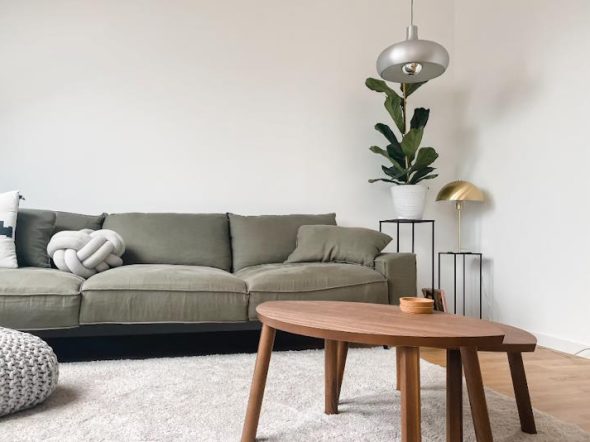Minimalism has been popular in interior design for the last half century, most recently influenced by Japanese and Scandinavian styles. These two cultures are known for their less-is-more approach to décor which forms the basis of minimalist design. The latest trend for ‘Japandi’ interiors blends the best of both worlds to create a clean and practical living space that is nonetheless homely.
One of the major reasons why minimalism is in-demand is because it appeals to a wide audience. Its soothing colour scheme and focus on functionality leaves little to dislike, even if it’s not exactly to your taste. In fact, a recent survey conducted by fitted furniture experts Hammonds found that the average person would offer around £3.6k over the asking price for a property with minimalist décor.
Follow this guide to achieve minimalism in your interior design and add value to your property.
Colour palettes and textures
A neutral colour palette is one of the pillars of minimalist style. White, beige, or grey should be at the base, grounded with earthy tones like sand and stone. These colours promote a sense of serenity which will put you and any prospective buyers at ease.
Buyers also find it easier to envision themselves in a new home if it has a plain palette. As Kirsty Oakes, Head of Product and Marketing at Hammonds Furniture, explains: “a minimalist design allows [house hunters] to imagine how they might decorate the room themselves”. This inspires an emotional attachment to the property, generating quick and competitive offers.
To add depth and interest to each room, rather than using bold colours incorporate natural materials such as wood and marble. You can also feature fabrics for more texture such as a handwoven rug and knitted blankets. These details will make the space feel lived in.
Fittings and fixtures
The natural palette of minimalism is juxtaposed with a clean aesthetic in fittings and fixtures. Functionality should be a focus, but seek out opportunities for visual simplicity.
When trying to identify minimalist furniture, look for straight lines and geometric shapes and materials like glass and metal. Examples include kitchen cabinets with no handles, metal-legged chairs in a sleek design, and glass-topped tables that don’t steal focus in the space.
Use the same principle to find fixtures that work for minimalist interiors. LED lighting and pendant hanging lamps are suitable, while ornate chandeliers and mounted wall lights are not. In general, blinds will work better than curtains when you’re trying to achieve this aesthetic.
Decluttering and storage
Decluttering is key to achieving minimalism. Countertops and tables should be kept clear at all times.
Improving your storage is the best way to ensure that your belongings remain out of sight. However, make sure that your storage options don’t dominate the space or interrupt the minimalist style. Take advantage of often-overlooked spaces, such as incorporating understairs built-in cabinets or drawers and utilising free wall space by installing floating shelves.
You can use strategic lighting and statement pictures to bring personality to the overall design while keeping general décor to a minimum. Plants are another great way to soften minimalist schemes: consider having floor plants in room corners, and add pots with trailing plants on top of shelves.
